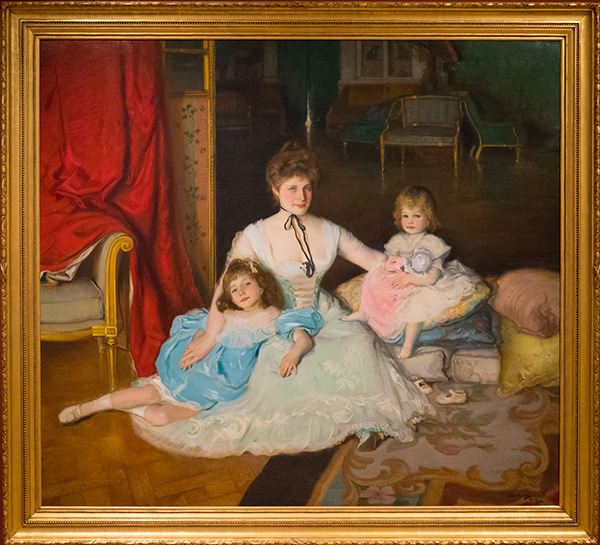Phoenix Art Museum – Study
Madame Koch & Her Children
Oil on canvas Madame Koch & Her Children – by Julius Rolshoven
For the last several years I have been spending quite a bit of time at museums studying the art of painting. This includes color theory, composition, techniques for creating reality and more. I do this to try to make my photography art stronger. For those that don’t know I am pushing into the art market with my work. I now consider myself a ‘Lens Based Artist.’ I’ll be exploring different paintings and ideas in future posts.
‘Lens Based Artist?’ You might ask, “What the heck is that, Bob?” All of my source imagery comes through the lens of a camera. But then there is a divergence from photography as I mix, match and manipulate the files. More on this in future blog posts.
Back to the study of art.
I have viewed this image numerous times, and perhaps you can help me a bit. No matter where I stand all eyes in the painting follow me around the room. I have a feeling there is a name for this phenomenon but I haven’t been able to find out what that is. If you know, please chime in.
Painting of Madame Koch and her Children at Phoenix Museum of Art
Child – The Older
Child the Younger
Madame Koch herself
I thought that it was the position of the eye within the eye socket that was the cause of the effect of following you around the room. As you can see from the close crops that the eyes are all in different positions. I find this perplexing. This is quite a large painting, and I’m not sure if that has anything to do with this effect.
If you have any ideas on this, please let me know!
Yours in Creative Photography, Bob






Called the “Mona Lisa Effect” although Da Vinci was certainly not the first to paint eyes that seem to follow the viewer. This holds true even in snap shot reproductions or books. Regardless of the turn of the head, the eyes are looking straight forward. The phenomenon is enhanced in that the great dimensional lighting does not change on 2 dimensions (of course it’s a painting), so as the viewer moves the angle to the face narrows, but the lighting does not (as it would if viewing that individual in person). Makes for a highly engaged and engaging portrait. A beautiful example!
Thanks, Sara, It is an incredible effect. Eyes to the front. Cool!